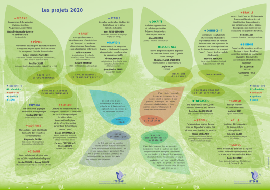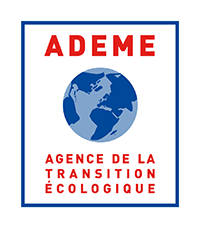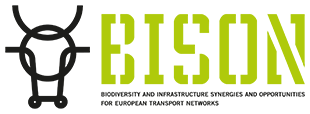Plateformes (2)
- Multimodal platforms of transport and services. The logistic landscapes in Nord-Pas de Calais
Multimodal platforms of transport and services. The logistic landscapes in Nord-Pas de Calais
The development of the digital economy bears within itself the myth of the deterritorialization of globalized trades. Ordering a product behind a computer does not directly refer to the idea of built-up areas and perennial constructions, but rather, to diffuse spaces located in the distant elsewhere undetermined, but often Asian area, regions of production of consumer goods.
Between the two however come the circulation of people and goods, structured in logistics distribution networks, playing with technical devices and modes of transport. Far from being dematerialized, logistics activities are spatially "anchored", especially during two stopping points: the storage of goods which gives rise to the development of infrastructure, hangars, and warehouses. The modal transitions, from boat to truck or train particularly, also from cargo to barge, which takes also place s in infrastructures designed and built for the long term: platforms, ports, airports and railway stations in the main.
This way globalized trade are fully localized in built areas, from a very locally scale, interacting with the entire metropolis, up to scale world. Most pertinently for the present discussion it should be noted that these infrastructure are generally located on the outer layers of metropolitan areas. These spaces of the logistic and the « commodity » component of transportation are seldom analyzed by social sciences. Yet, they would shape our cities and especially contemporary metropolises, on a large scale, drastically. It is at least the initial hypothesis of our work on the spaces of logistic which we have been carrying out in Nord Pas de Calais from two years, precisely around the Delta 3 multimodal and logistics Platform Delta 3 located in the urban community of Hénin-Carvin (CAHC) south of the metropolitan area of Lille.
The frame of our problematization shares the same paradoxical conclusion: although ‘huge and spectacular' the logistic spaces and those of transport, could go 'unnoticed' and “non-controversial”. Thus, for the geographical area of our research, the recent arrival of the warehouses of 100 000 m² of the Amazon company, which we also take into account here, does of course give rise to an opportunistic media promotion in terms of economy and employment, but not in terms of spatial planning and territorial disruption. Not far from there, 2.5 km, the Delta 3 multimodal platform extends to nearly 300 000 m² and has never aroused outraged advertising. This is only the warehouses, the global infrastructure make a total of more than 2 km².
Our approach is therefore to "think of the unthought” of" the area and the spaces of logistic, and their ability of staying non-controversial and unnoticed'. An ethnographic approach focused on the uses of spaces in interaction with logistics activity show that those infrastructures makes scheme with mobility equipments and commercial applications. Thus lead us to think the globalized trades as the most powerful pattern maker of suburban regions which thus become the central points of the global economy.












